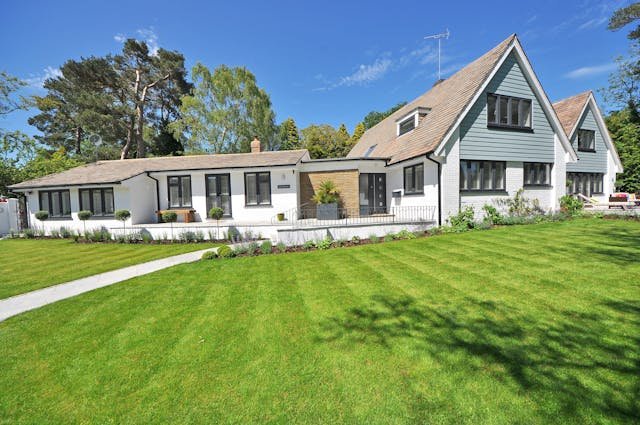In the domain of landscaping, accomplishing that rich, dynamic green grass is a widespread craving. Be that as it may, customary strategies for grass care frequently include weighty water utilization, compound composts, and internal combustion hardware, which can have negative natural effects. Enter greener grass landscaping – a feasible methodology that focuses on eco-accommodating practices to develop a better, stronger yard. In this article, we investigate the standards and advantages of greener grass landscaping, alongside useful ways to carry out it in your open-air space.
Contents
What is Greener Grass Landscaping?
Greener grass landscaping is an eco-cognizant way to deal with yard care that spotlights on limiting natural effect while keeping a wonderful and sound yard. It underlines economical practices like water protection, regular treatment, and biodiversity upgrades to advance the drawn out wellbeing of the dirt, plants, and biological system.
Advantages of Greener Grass Landscaping
Natural Maintainability: By decreasing water utilization, limiting substance use, and supporting biodiversity, greener grass landscaping limits the ecological impression of customary yard care rehearses.
Better Soil: Regular treatment techniques, for example, fertilizing the soil and mulching, further develop soil wellbeing and fruitfulness, making areas of strength for a for a tough grass.
Improved Biodiversity: Consolidating local plants, wildflowers, and pollinator-accommodating living spaces into your grass advances biodiversity, supporting neighborhood untamed life populaces like honey bees, butterflies, and birds.
Cost Investment funds: Greener grass landscaping frequently requires less data sources, like water, composts, and pesticides, prompting long haul cost reserve funds for property holders.
Water Preservation
Effective Water system: Introduce a brilliant water system framework or use dribble water system to convey water straightforwardly to the roots, limiting waste and expanding proficiency.
Watering Practices: Water your grass promptly in the first part of the day or late at night to decrease dissipation and guarantee ideal assimilation by the dirt.
Dry season Open minded Plants: Pick local or dry spell lenient grass species and plants that require less water to flourish in your area’s environment.
Regular Preparation
Fertilizing the soil: Begin a treating the soil canister to normally reuse natural waste from your kitchen and nursery, making supplement-rich manure to take care of your yard and nursery.
Mulching: Use grass clippings, leaves, or straw as mulch to hold dampness, stifle weeds, and improve the dirt with fundamental supplements as they decay.
Natural Alterations: Integrate natural manures, for example, fertilizer tea or kelp separately, to give extra supplements to the dirt without unsafe synthetic substances.
Biodiversity Upgrade
Local Plants: Coordinate local grasses, blossoms, bushes, and trees into your scene plan to help nearby biological systems and draw in local untamed life.
Pollinator Living spaces: Make pollinator-accommodating territories, for example, butterfly nurseries or honey bee amicable bloom beds, to help fundamental pollinators and improve biodiversity.
Regular Nuisance Control: Empower normal hunters, like ladybugs, birds, and useful bugs, to control bug populations and lessen the requirement for synthetic pesticides.
Commonsense Tips for Greener Grass Landscaping
Cut High: Set your yard trimmer edge to a higher setting to advance further root development, further develop dry season resilience, and stifle weed development.
Leave Grass Clippings: Rather than sacking grass clippings, pass on them in the yard to return supplements to the dirt and further develop dampness maintenance.
Circulate air through Routinely: Intermittently circulate air through your yard to reduce compaction, further develop airflow, and advance supplement assimilation by the roots.
Overseed Uncovered Patches: Overseed exposed or slender regions of your yard with grass seed to advance denser development and diminish weed attack.
Conclusion
Greener grass landscaping offers a reasonable option in contrast to regular yard care works on, advancing ecological stewardship while keeping a lovely and solid grass. By embracing standards like water preservation, regular preparation, and biodiversity improvement, mortgage holders can make open-air spaces that are outwardly engaging as well as tough, dynamic, and naturally helpful. Whether you’re beginning without any preparation or progressing a current yard, greener grass landscaping gives way toward a more reasonable and charming outside climate into the indefinite future.



